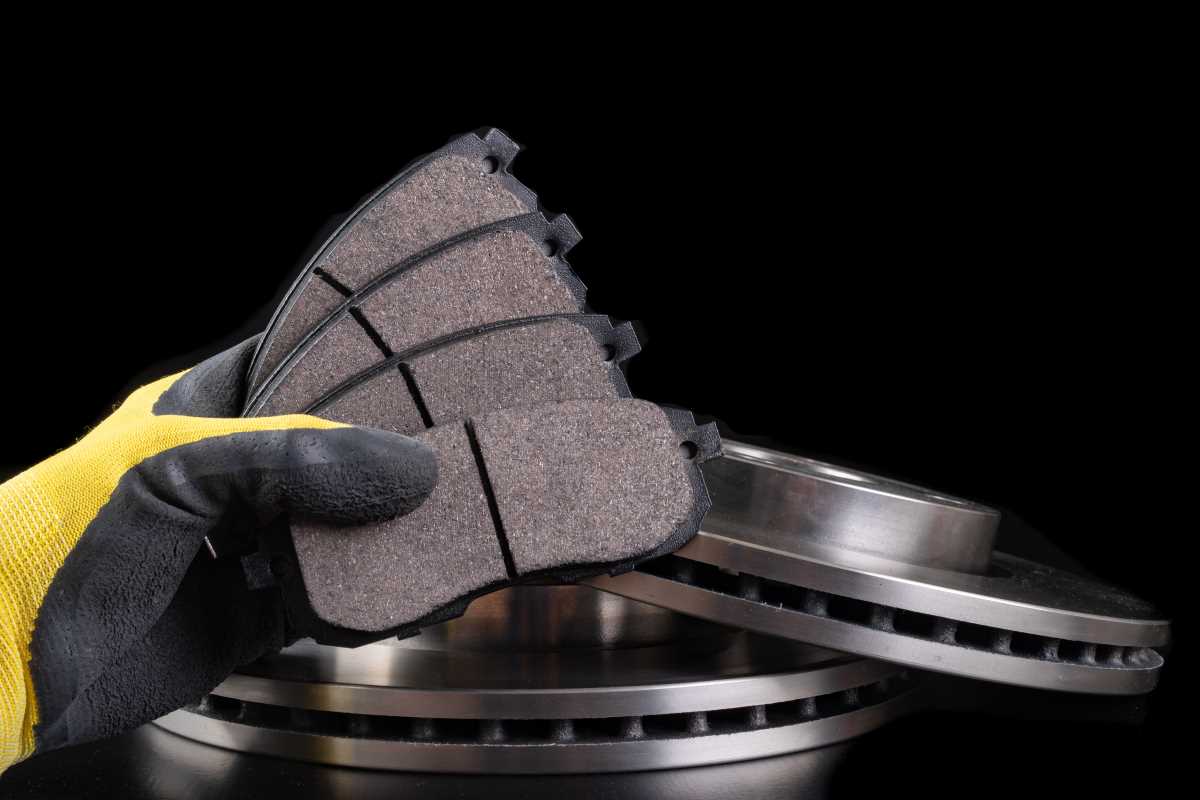Your vehicle’s braking system is arguably its most critical safety feature, and the brake pads are at the heart of it all. These small components do the hard work of creating friction to slow and stop your car every time you press the pedal. Because they wear down with use, knowing when they need replacement is essential for your safety and the health of your vehicle. Many drivers feel uncertain about this, often relying solely on a mechanic's recommendation. Taking the time to understand the signs of worn brake pads empowers you to make informed decisions about your car’s maintenance. You can learn to identify the key indicators yourself, ensuring you replace them at the right time.
The Role of Brake Pads in Your Vehicle's Safety
Understanding what your brake pads do helps highlight why their condition is so important. Every time you press the brake pedal, you are activating a hydraulic system that pushes the brake pads against a spinning disc (the rotor) attached to your wheel. The friction created between the pad and the rotor is what slows your car down.
This process generates a lot of heat and gradually wears away the friction material on the brake pads. Eventually, this material becomes too thin to function effectively. Driving with worn-out brake pads can dramatically increase your stopping distance, which could be the difference between a close call and a serious accident. It also leads to more expensive repairs down the road, as worn pads can damage other components of the braking system.
Listen to Your Car: Audible Signs of Worn Pads
Your car often provides clear, audible clues that your brake pads are nearing the end of their life. Learning to recognize these sounds can give you an early warning before a more serious issue develops.
1. High-Pitched Squealing or Screeching
The most common and intentional sound is a high-pitched squealing that occurs when you apply the brakes. Most brake pads are designed with a small metal tab called a "wear indicator." As the friction material on the pad wears down to a certain minimum thickness, this tab makes contact with the brake rotor, creating a sharp, metallic screech.
This sound is your car's built-in alert system telling you it’s time to schedule a brake service soon. Do not ignore it. It’s a helpful, early warning designed to get your attention before the pads become dangerously thin.
2. Deep Grinding or Growling Noises
A much more urgent sound is a deep, loud grinding or growling noise. This indicates that the brake pads have worn down completely. The noise you are hearing is the sound of the metal backing plate of the brake pad grinding directly against the metal brake rotor.
This is a serious problem. The metal-on-metal contact not only severely reduces your stopping power but also rapidly damages the brake rotors. Rotors are much more expensive to replace than pads. If you hear grinding, your vehicle needs immediate attention from a qualified mechanic. Continuing to drive can be extremely unsafe.
Feel the Difference: Physical Sensations of Bad Brakes
In addition to sounds, you can often feel changes in your vehicle's performance that point to worn brake pads. Pay close attention to how your car behaves when you slow down.
1. Vibrations or Pulsing in the Brake Pedal
You might feel a vibration or pulsing sensation through the brake pedal when you press it. This can feel like the pedal is shuddering under your foot. While this can sometimes be caused by warped brake rotors, it can also happen when brake pads have worn unevenly. The uneven surface creates a throbbing sensation as the pad makes inconsistent contact with the rotor.
This vibration compromises smooth braking and is a clear sign that your braking system needs a thorough inspection. A smooth, consistent feel is what you should expect from healthy brakes.
2. The Car Pulls to One Side
Your vehicle should stop in a straight line. If you notice your car pulling to the left or right when you apply the brakes, it could signal a problem with your braking system. This issue might be caused by a stuck brake caliper, but it can also be due to brake pads wearing out unevenly.
If one brake pad is more worn than the one on the opposite wheel, it will create an imbalance in braking force, causing the car to veer. This is a significant safety concern that requires immediate professional diagnosis.
A Visual Inspection: How to Check Your Brake Pads
You don’t always have to rely on a mechanic to see the condition of your brake pads. With a little effort, you can perform a basic visual inspection yourself.
What to Look For
Your brake pads are visible through the spaces in your wheel's spokes. You will need a flashlight to get a good view. Look for the brake pad pressed against the shiny metal rotor. You should be able to see the outer pad. The key is to check the thickness of the friction material.
A new brake pad has about 8-12 millimeters of friction material. Experts recommend replacing them when they wear down to about 3-4 millimeters. If the friction material looks to be less than a quarter of an inch thick (about 6mm), you should plan to have them replaced soon. If you see it’s paper-thin or can't see any material at all, the replacement is urgent.
Checking the Brake Fluid
Another clue can be found under the hood. Check your brake fluid reservoir. As brake pads wear down, the fluid level will drop slightly to fill the extra space in the brake lines. A low fluid level can indicate that your pads are getting thin. Note that you should not top off the brake fluid in this case. When new pads are installed, the fluid will return to its normal level.
Why Timely Replacement Matters
Putting off a brake job can have serious consequences that go beyond safety. It can also hit your wallet hard.
- Safety: Worn pads increase stopping distances. This is a critical safety issue that puts you, your passengers, and other drivers at risk.
- Cost: As mentioned, completely worn-out pads can destroy your brake rotors. Replacing both pads and rotors is significantly more expensive than just replacing the pads. A typical brake pad replacement might cost a few hundred dollars, but adding rotors can double that amount or more.
- Performance: New brake pads restore your vehicle's stopping power and provide a smoother, more responsive pedal feel, giving you greater confidence behind the wheel.
 (Image via
(Image via





